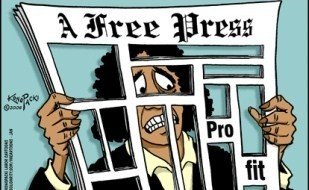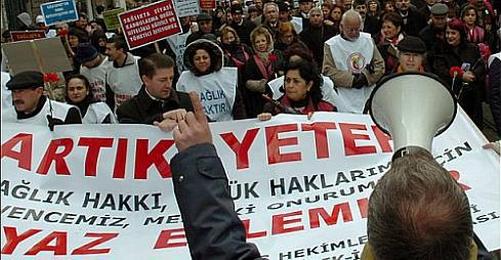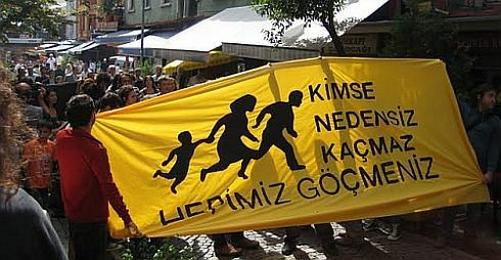4 New Books Released
A BIA Approach to Rights Reporting

As part of its “Media Freedom and Independent Journalism Monitoring and News Network (BIA²)” project, the IPS Communication Foundation releases four new books on rights journalism. The books, aimed at a readership of journalists and rights activists, are a result of 23 media training workshops run by IPS between 2004 and 2005.
A total of 860 journalists and rights activists, 348 of them women, 512 men, had taken part in these educational workshops. Assistant Professor Dr. Sevda Alankus, Dean of the Eastern Mediterranean University’s Communications Faculty, acted as editor and training advisor for the series of books.
A focus on rights
The four books are titled “Human Rights Journalism”, “Journalism Focusing on Women's Rights”, “Journalism Focusing on Childre's Rights” and “Rights Organisations: Becoming Visible in the Media.”
At the weekend, BIA invited journalists, lawyers, academics and activists to a breakfast in order to launch the series of books.
Making the invisible visible
BIA coordinator Ertugrul Kürkcü spoke about the progress in the reporting on the freedom of expression and rights monitoring since the inception of the project. He also discussed the Independent Media Forum organised at the end of 2006, saying: “We have the possibility to see what others cannot see.”
He added, “Even if the state boasts that the number of imprisoned journalists has decreased, we started 2007 with the murder, with the execution of Hrant Dink,” and invited those at the breakfast to join the commemoration event for the murdered Turkish-Armenian journalist on that day.
A contribution to human rights literature
Assistant Professor Dr. Sevda Alankus spoke about the fact that with this project academics had become part of “real life”. “We gathered examples of how journalism could be done better.”
Describing BIA as a “special experience”, Alankus added that reporting on rights also meant considering rights violations. The books, she said, represented a contribution to the literature focusing on human rights.
She added that in the current atmosphere of conflict and social tension, BIA was the first to express the concept of “peace journalism”; it was heartening that the term had been adopted by the mainstream media, too.
Bianet dissolves lines
Assistant Professor Dr. Serdar Degirmencioglu said that in journalism there were often rigid lines between areas of interest. For instance, someone working on children’s rights might have problems finding a newspaper or television channel interested in their work. However, bianet represented a forum where these lines had been dissolved, and the newly-published books were a result of this mentality.
Lawyer Hülya Gülbahar, president of the Association for Supporting and Educating Women Candidates (KADER), praised the fact that bianet had introduced women’s rights journalism to dozens of female and male journalists of regional media institutions through their educational workshops.
"If the media does not try to look at issues from a woman’s perspective, then it is turned into a mechanism against women. Bianet has played an important role in the formation of the Women’s Media Monitoring Group. Indeed, bianet’s educational workshops, which have been the basis fort he books, have been important for creating ethical rules for the media."
Journalists inadvertently violate rights and need to be educated
Journalist Tugrul Eryilmaz emphasised the importance of rights journalism, pointing out that even the most well-meaning journalistst could inadvertently violate rights. Thus, bianet was taking an important step forward. He called on all people working in the media to acquire the books and read them.
Journalist Ipek Calislar described bianet’s approach as an invitation to everyone to change themselves first. “We began to understand together that by making news we could also commit crimes. Some of us commit many, some of us few crimes. Focusing on this has widened all of our horizons and this needs to be continued.” (EZO-GG/TK/AG)
Politician and NGOs Urge for Clarification of Önkol's Death

EU PROGRESS REPORT
Women's Rights Must be Implemented in Daily Life

Protests against Health Care Contribution Rate

Greens Launch Trial for Palovit Valley

"When Will Mohsen Abdolkhani and Hamid Karimnia Be Released?"







